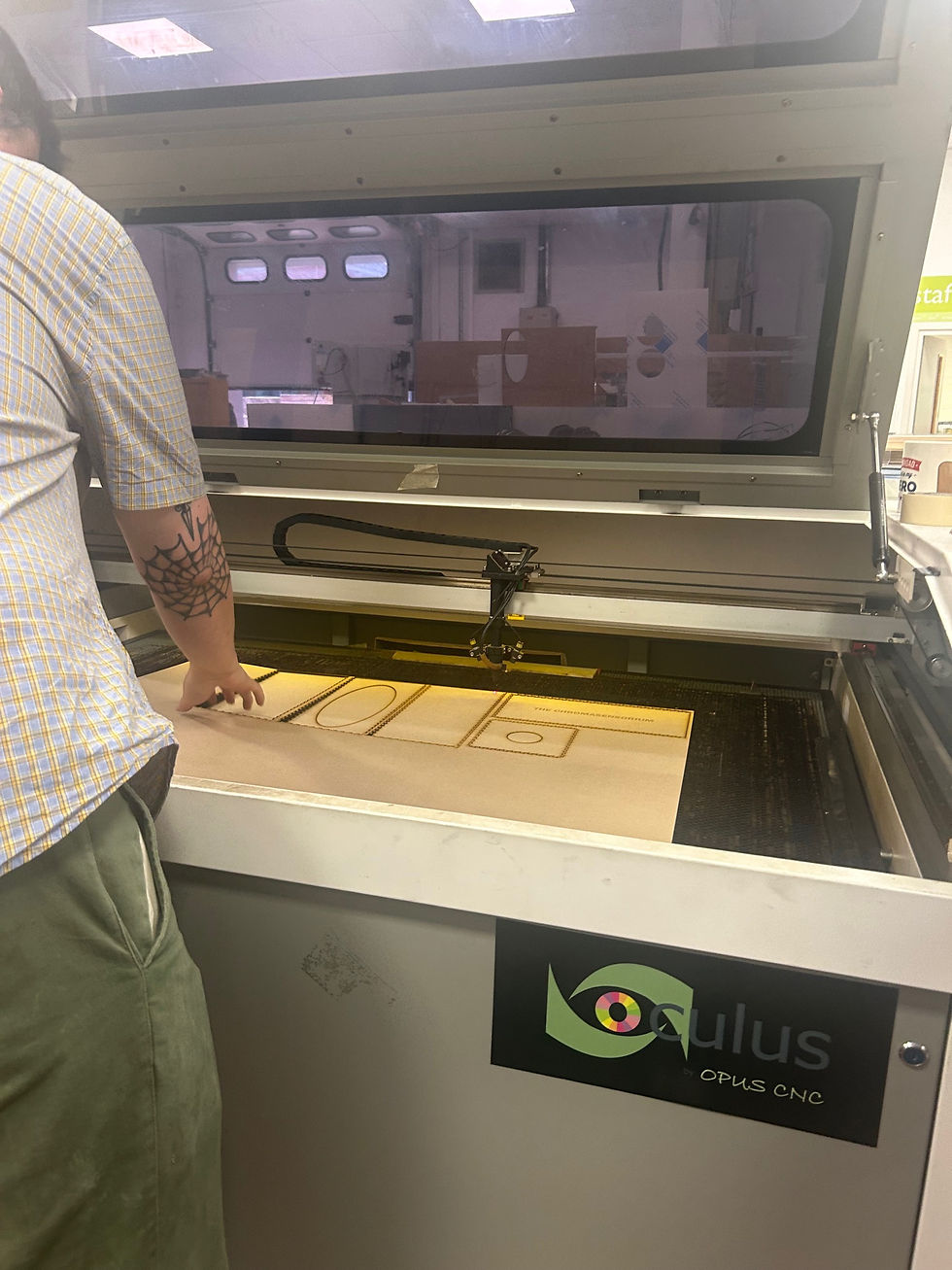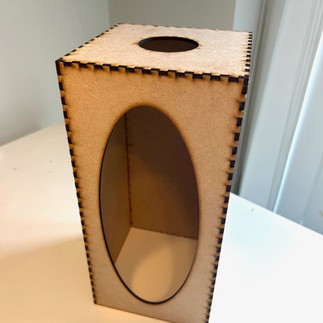The ChromaSensorium
- lsaviddo
- Aug 20
- 3 min read
Introducing The ChromaSensorium Box: A Portable Lab for Ferrofluid Exploration
While developing the ChromaFlow project, I realised that the work needed an extension beyond the projection itself, a tangible element that could be held, explored, and shared.
This led to the creation of The ChromaSensorium box: not the title of the artwork created, but a product in its own right. The idea was to create a portable laboratory, something I could sell or distribute, that allows people to engage with the work in a more personal and interactive way.
You wouldn’t give multiple artworks the same name, so I felt it needed to function more like a product, something distinct, recognisable, and reusable across different contexts. Conceptually, this means the box shifts the work from a fixed installation to something portable and adaptable, meaning it can live beyond a single exhibition, evolving with new projects while keeping a clear, memorable brand. It’s also practical, something I can take with me to future gigs, workshops, and presentations, acting both as a creative space and as a way to present and sell myself professionally.
Design and Concept
To start the design of this box, I had to mock up how I would have this as a self-contained, transportable unit that houses the tools, and materials, where the internal experiment can then be captured and projected in real time. Th template was created in the MakerCase website, with the help of advisor Rory Watkins, Technician, Faculty of Society and Culture.
For the box itself, a cut-out on the top allows a camera to capture the activity inside, then camera is then connected to a projector, while the unit is made of clear Perspex so the contents remain visible , allowing the movement of the ferrofluids to be displayed externally. Since the prototype was made from MDF, I added a cut-out on the side so that, while Perspex isn’t yet available, the contents can still be viewed inside the box
This setup transforms the box into a portable, interactive display, bridging the gap between a hands-on experiment and a projected immersive experience, which is central to the ChromaFlow practice and its aim of representing a unique neurological condition that translates sound into distinctive patterns and colours.


The ChromaSensorium demonstrates how ChromaFlow can exist in different forms, from large-scale projection to a contained, portable display. It allowed me to think about how my work represents unique neurological perceptions while also creating interactive and immersive experiences for others. The box has become both a testing ground and a way of reimagining how audiences might encounter the project outside of the studio or gallery.
This prototype marks the first step in developing the ChromaSensorium into a fully realised product. While this version was made from MDF, future iterations in Perspex will enhance its transparency and connection to the fluid materials inside. More importantly, the process of building and testing the box has opened up new possibilities: how the work might travel beyond the studio, how audiences might engage with it in different settings, and how it could function not just as an artwork but also as a tool for education, wellbeing, or interactive installations.
Moving forward, I want to refine the design, experiment with live projection through the box, and explore how it can be used to expand the ChromaFlow practice into new spaces and contexts.
Although currently at the prototype stage, determining the necessary components for the ChromaSensorium remains a significant challenge. The image documents a mind-mapping session with Phil Iddon, where we collaboratively explored and planned the practical requirements for how the system might function.

While still speculative, these sessions were instrumental in beginning to shape the ChromaSensorium as more than just an installation: as a potential portable laboratory of sensory exchange. Looking ahead, this early stage of experimentation lays the groundwork for future collaborations with musicians and neurodivergent participants, where the ChromaSensorium could evolve into an, adaptable tool for co-creative exploration.









Comments